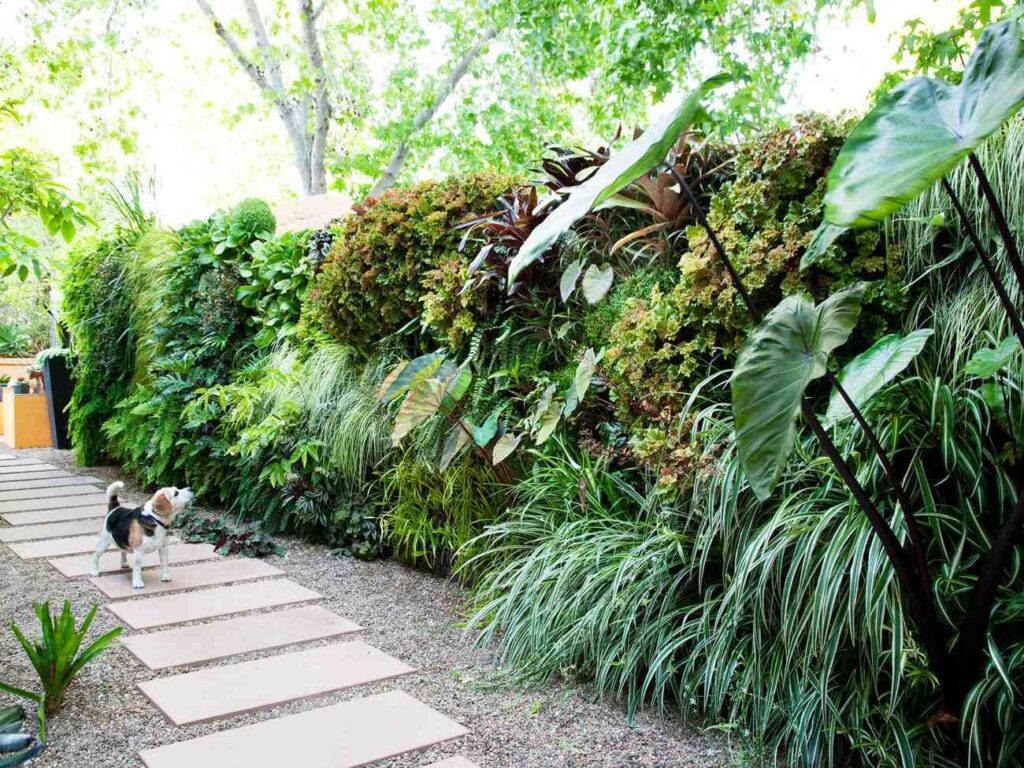Given the rising pollution levels in urban settings, outdoor living walls can serve as natural air purifiers! Green walls harness the anti-pollution benefits of plants while being a space-efficient solution to curb pollution in public places. A recent study further investigated the potential of different plant species in mitigating pollution, and here are some interesting results –
How Do Living Walls Reduce Air Pollution?
Plants on living walls reduce carbon dioxide levels in the atmosphere and release oxygen through photosynthesis. Furthermore, the leaf surfaces of the plants can absorb, modify, or degrade numerous air pollutants. Particulate matter that is absorbed by the leaves can then be washed off by the rain. Therefore, living walls can be an effective solution to improve the air quality of crowded and polluted public spaces.
The degree of air purification by living walls depends on various factors, such as wind speed and direction, humidity levels, leaf area and plant species.

Which Living Wall Plants Are The Best For Air Purification?
Latest research indicates that besides external factors, the leaf shape and other micromorphological properties of the plant surfaces play a notable role in air pollution reduction. For example, the evergreen candytuft and ivy leaves were found particularly effective at trapping pollutant particles of varying sizes, whereas the hairy leaves of lavender enable better washing off of particulate matter by the rain. Based on their observations, the researchers have concluded that having a mix of different plant species in outdoor living walls can help curb air pollution most efficiently. By combining diverse species, one can benefit from their unique air purification capabilities, leading to the most optimal air quality.
Besides the above species, plants like the Spider Plant, Peace Lily, Snake Plant, Aloe Vera, Boston Fern, English Ivy, and Philodendron have been identified as excellent natural air filters. Therefore, public spaces can benefit from a living wall combining these species to improve the neighborhood’s air quality, thereby protecting the health of residents.
Conclusions
Besides the mental health benefits of living walls, they offer physiological benefits by reducing air pollution in urban hotspots. Community projects to install living walls in parks, gardens, and other outdoor spaces can help cities breathe easier.
For custom living wall installations in Brooklyn, New York, contact Eco Brooklyn today!

